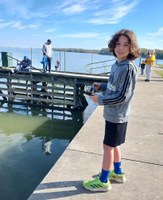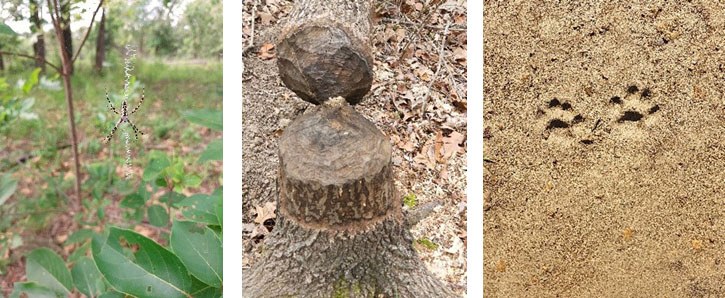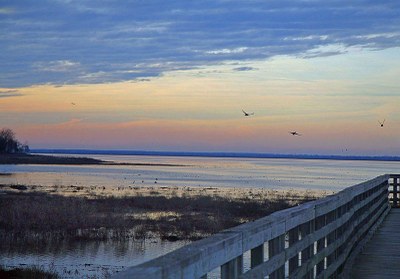Nature
Rich and Fertile Soil
Imagine a time when there was not a lake here. Seasonal flooding of the South Sulphur River provided nutrient dense deposits. As a result, trees, shrubs and other plants thrived.
Over time, changes have occurred. Ranching and other human activity changed plant life here and increased soil erosion. Flooding was reduced with the creation of Jim Chapman Lake.
Jim Chapman Lake
The U.S. Army Corps of Engineers built the lake to control seasonal flooding and as a water source for the Metroplex. Water collection began in 1991.
 The 19,300-acre lake is stocked on a regular basis by Texas Parks and Wildlife with a variety of fish species. Anglers often catch blue and channel catfish, bluegill, Florida largemouth bass, crappie and hybrid striped bass. Did you know that in the winter, Texas Parks and Wildlife also stocks a special event pond with rainbow trout?
The 19,300-acre lake is stocked on a regular basis by Texas Parks and Wildlife with a variety of fish species. Anglers often catch blue and channel catfish, bluegill, Florida largemouth bass, crappie and hybrid striped bass. Did you know that in the winter, Texas Parks and Wildlife also stocks a special event pond with rainbow trout?
Stop by our headquarters to borrow a fishing pole when you visit.
Cooper State Park Complex features the steeper hills of South Sulphur Unit’s 2,560 acres and the gradual rises of Doctor's Creek Unit’s 466 acres.
Nature Flourishes Here

Native oak savannahs, prairies and bottomland hardwoods are key for the health of this Post Oak Savannah ecoregion. They provide habitats for wildlife like birds, mammals, reptiles, amphibians and insects.
Many trees such as post oak, winged elm, bois d’arc, Texas honey locust, mesquite, eastern red cedar, eastern persimmon, Mexican wild plum, black walnut, pecan and hickory provide homes and food for wildlife. 
We are working to restore the prairie to help prevent erosion. Visit during the blooming seasons to see the wildflowers in the restored prairie areas.
Nature Activities
Viewing wildlife is a favorite activity here. We have over 200 species of birds for the bird-watching enthusiast. Mammals you might see include red and gray fox, bobcat, striped skunk, opossum, beaver, raccoon, white-tailed deer, nine-banded armadillo and eastern cottontail.
Become a citizen scientist and record your views on eBird or iNaturalist.
Remember your Leave No Trace principles by giving wildlife ample space and distance.
Night skies
Night sky viewing is another way to enjoy nature at the park. We are working to eliminate light pollution by limiting lights that produce glare and installing shielded lighting. Not only does this help you see the stars better, it helps migrating birds and other animals that could be confused by the lights.
Step outside and look up. How many constellations can you see and name?
Information
Natural world
- Global bird guide apps Merlin and Audubon Bird
- Cooper State Park Bird Checklist
- Butterflies and Moths of Hopkins County and Delta County
- Lake and fishing information for Jim Chapman Lake
- Bass Identification and comparisons
- Trees of Texas

